Last updated: September 2025
Self‑employed entrepreneurs and freelancers in Atlanta, across the United States, and in the UK and Canada often find that securing a car loan involves more than choosing the right vehicle. Unlike salaried workers who can submit pay stubs or W‑2s, business owners and gig workers must show a steady and verifiable income stream. Lenders typically want proof of income from independent sources, such as tax transcripts or bank statements, rather than self‑certified numbers. Failing to submit compliant documents can delay the process or result in outright rejection.
FinancialDocsProvider.com helps you organize and format your existing income documents so lenders can quickly assess your ability to repay a loan. We never alter amounts, dates or payees; we improve clarity and packaging so nothing looks confusing or incomplete. In this comprehensive guide, we cover the legal foundations, permissible edits, and practical steps self‑employed applicants should follow when preparing proof of income for car loans in Atlanta and beyond.
Related Entities & Terms
- Proof of income forms: W‑2, 1099, T4/T4A, Notice of Assessment (NOA), P60/P45
- Tax transcripts & schedules: Form 1040 Schedule C, SA302 (UK), CRA NOA
- Income verification: IRS Income Verification Express Service (IVES), Form 4506‑C
- Regulators: Consumer Financial Protection Bureau (CFPB), Federal Trade Commission (FTC), Internal Revenue Service (IRS); Financial Conduct Authority (FCA); Financial Consumer Agency of Canada (FCAC), Canada Revenue Agency (CRA)
- Employment records: profit‑and‑loss statements, invoices, contracts, bank statements
- Credit metrics: debt‑to‑income (DTI) ratio, affordability assessment, creditworthiness
- Loan types: auto financing, hire‑purchase agreements, personal lines of credit
- Data privacy: redaction, encryption, identity verification
What are the legal basics of proof of income for car loans?
Lenders need independent, reliable evidence that your income can support the monthly payment. Across the US, UK and Canada, regulators discourage self‑certification and favor third‑party records. Using official transcripts and statements not only speeds underwriting; it also protects you against fraud accusations.
In the United States, the IRS Income Verification Express Service (IVES) lets lenders retrieve tax transcripts with your written consent via Form 4506‑C. This confirms that the numbers on your application match what you filed with the IRS. In the UK, the Financial Conduct Authority’s creditworthiness rules state that income can include wages, savings or household income—but lenders should not rely on self‑certification. In Canada, the CRA’s Proof of Income Statement summarizes your income and deductions for a selected tax year and is frequently requested for loans.
Across all three markets, falsifying financial documents is illegal. Submitting altered returns, fake pay stubs or edited bank statements can trigger loan denials, civil penalties and even criminal charges. Regulators such as the CFPB (US), FCA (UK) and FCAC (Canada) expect lenders to test affordability using independent evidence and to maintain robust anti‑fraud controls.
- US essentials: Tax returns (Form 1040 + Schedule C if applicable), bank statements, and—when requested—IRS transcripts via IVES.
- UK essentials: SA302s with tax year overviews, bank statements, and supporting contracts; lenders evaluate broader household income but avoid self‑certification.
- Canada essentials: CRA Notices of Assessment and the Proof of Income Statement from My Account, plus recent bank statements.
Bottom line: gather official records first, then use clear formatting to help underwriters review your file quickly and accurately.
Which edits are allowed when preparing your documents?
Edits that improve readability are acceptable; edits that change facts are not. You can clean, combine and label documents so they are easier to evaluate. The goal is transparency—helping lenders see the same numbers you see, without confusion or guessing.
Lenders and underwriters prioritize clarity, legibility and completeness. It’s fine to compile multiple statements into a single PDF with consistent pagination. You may redact sensitive identifiers (account numbers, SSNs, tax IDs) when those details are not required for underwriting. You can also rotate pages, adjust brightness or contrast, and add brief, factual annotations (for example, “client retainer—March”).
FinancialDocsProvider.com assists by cleaning up scans—straightening pages, improving contrast, merging statements in chronological order and adding bookmarks for fast navigation. We also ensure digital files are accessible to screen readers and meet common technical requirements like PDF/A. These steps make your documents easier to process without altering any amounts or dates. If you are unsure, apply a simple test: would an auditor or regulator view the edit as improving clarity rather than hiding information?
- Formatting you can do: combine PDFs, add a hyperlinked table of contents, use consistent file names (e.g., 2024-07_Bank-Statement_Business-Checking.pdf), and include page numbers.
- Helpful annotations: short, neutral labels such as “invoice #188 paid” or “owner draw,” avoiding speculation or narrative commentary.
- Privacy‑first redaction: mask only what’s not needed for underwriting; leave balances, dates, payees and amounts intact.
- Accessibility: add selectable text (OCR), bookmarks by month, and alt text for key exhibits when required.
What document edits are illegal?
Any change that misrepresents facts is illegal. Inflating revenue, altering transaction dates, deleting negative items or fabricating payees crosses the line into fraud. Regulators explicitly warn that self‑certification is insufficient and that lenders must verify income through independent evidence.
Do not modify totals on bank statements, remove transactions, or alter payer names. Never backdate invoices or change the tax year on official returns. These actions misrepresent your finances and can trigger anti‑fraud reviews, loan denials, civil penalties or criminal prosecution. If something looks unusual—a large one‑time transfer, for instance—attach a short and factual explanation instead of editing the record.
- Allowed edits: redacting personal identifiers, improving legibility, merging documents into one file, adding bookmarks or labels.
- Illegal alterations: changing amounts, dates, account numbers, adding or deleting transactions, or creating entirely fake documents.
Remember: honesty saves time. Clean, well‑organized documents paired with clear explanations will lead to faster, more confident decisions from lenders.
When do self‑employed applicants need professional document formatting?
Professional formatting is most valuable when your income is irregular or spread across multiple sources. If you juggle several bank accounts, dozens of invoices or cross‑border income, presenting a coherent package reduces back‑and‑forth with underwriting. The following mini‑scenarios illustrate how different borrowers assemble, explain and present their income.
Use these examples as models. They show the types of records lenders expect, how to handle seasonality, and where a professional service adds speed without crossing legal lines.
Atlanta freelance designer (US)
An Atlanta‑based graphic designer is applying for a new hybrid SUV. She runs a sole proprietorship and receives payments via digital platforms and direct deposits. Her lender asks for proof covering the last 24 months. She gathers:
- Two years of Form 1040 with Schedule C (including signatures) and accompanying 1099 forms.
- Six months of business and personal bank statements showing consistent deposits.
- A year‑to‑date profit‑and‑loss statement prepared by her accountant.
- Copies of major client contracts and invoices to demonstrate future cash flow (e.g., retainer agreements).
She submits a request through the IRS’s Income Verification Express Service, authorizing the lender to receive her tax transcripts. Because her documents originate from multiple sources, she engages FinancialDocsProvider.com to merge statements into a single PDF with bookmarks and a summary page. The result is a professional packet that satisfies the lender’s underwriting checklist.
- What we format: one bookmarked PDF, labeled monthly deposits, and a 1‑page income summary with DTI context.
- Outcome: fewer clarification requests and quicker approval because the numbers are easy to trace across documents.
London contractor (UK)
A self‑employed plumber in London needs a van for his business. His income fluctuates and sometimes includes cash. UK lenders generally require evidence such as:
- At least two years of HMRC documents (SA302 and tax year overviews).
- Bank statements showing business receipts and expenses.
- Signed contracts or letters from regular clients.
- Proof of address and identity (passport or driving licence).
The plumber cannot rely on self‑certification; the FCA’s guidance says lenders should base affordability on independent evidence and that “income is not limited to salary and wages”. Professional formatting helps him redact sensitive client information while retaining necessary figures. He also includes a short note explaining seasonal fluctuations and recent tool purchases.
- What we format: month‑by‑month cash‑flow table that ties to bank deposits and SA302 totals.
- Outcome: underwriters see the seasonality upfront and can assess affordability without multiple follow‑ups.
Toronto freelancer (Canada)
A freelance web developer in Toronto applies for a car loan at a credit union. Canadian lenders commonly ask for:
- The last two Notices of Assessment (NOA) from the CRA.
- A Proof of Income Statement from CRA’s My Account, summarizing income and deductions for the selected tax year.
- Three to six months of bank statements showing consistent cash flow.
- A year‑to‑date profit‑and‑loss statement and any major contract agreements.
The developer orders the Proof of Income Statement through CRA’s My Account. Given the many small invoices, she uses our service to categorize deposits, highlight recurring clients and ensure the final PDF is easy to navigate. This polished packet demonstrates creditworthiness without fabricating any numbers.
- What we format: deposit cross‑reference table mapping invoices to bank entries and a clean invoice index.
- Outcome: the credit union can trace income quickly, reducing the need for additional documentation.
How does FinancialDocsProvider.com work?
Our mission is simple: make your existing documents lender‑ready without changing facts. We organize, reconcile and present what you already have, so underwriters can evaluate your file quickly. The process is designed for compliance from intake to delivery.
- Intake: Upload tax returns, bank statements, invoices, contracts and any other income records via our secure portal. Share context such as lender name, target vehicle and timeline, so we can tailor formatting to their checklist.
- Reconciliation: We review for completeness, identify missing pages or mismatched dates and flag gaps. You can then supply additional files or clarifications before we build the final packet.
- Formatting & Redaction: We combine documents into an organized packet, clean up scans, straighten pages, insert bookmarks and add a consistent table of contents. Sensitive personal data (account numbers, SSNs) is redacted as allowed. Labels are short and factual.
- Delivery: You receive a compiled PDF with a summary sheet and consistent formatting. We include submission guidance and—if requested—a concise cover letter that explains seasonality or major one‑off items.
Security & retention: Files are handled through encrypted transfer, limited‑access workflows and a documented retention policy. We do not generate fake pay stubs or alter figures—ever. If your lender needs official transcripts, we point you to IRS IVES or CRA Proof of Income and explain authorization steps.
Technical standards: We target common lender specs, including PDF/A compatibility, OCR for searchability and clear page numbering. When helpful, we embed bookmarks by month or account and include a one‑page cross‑reference to speed reviews.
What should be on your car loan proof of income checklist?
Advance preparation saves days of back‑and‑forth. Use this checklist to build a thorough, self‑employed income packet that matches what underwriters expect. Gather official documents first, then add clear organization and limited, privacy‑focused redactions.
- Tax returns and schedules: Two years of complete personal and business returns (Form 1040 + Schedule C, SA302, T4/T4A, NOA). Include all pages, signatures and attachments.
- Official transcripts: Request tax transcripts via IRS IVES or CRA Proof of Income Statement. In the UK, include HMRC tax year overviews with your SA302.
- Bank statements: Provide six to twelve months of statements for business and personal accounts. Highlight income deposits and major expenditures. If you use multiple accounts, include each one.
- Profit‑and‑loss statements: A year‑to‑date P&L summarizing revenue and expenses. If income is seasonal, add a month‑by‑month view.
- Invoices and contracts: Signed contracts, purchase orders, retainers and outstanding invoices to evidence future income. Organize chronologically and show payment status.
- Identification and business documents: Government‑issued ID, business licences, articles of incorporation or partnership agreements as applicable.
- Explanatory notes: Brief letters for irregularities (large one‑off deposits, negative months, equipment purchases). Keep the tone factual.
- Contact details: Add your accountant’s or bookkeeper’s contact info for verification calls.
- Formatting: Combine everything into a single, logically ordered PDF with a table of contents and page numbers. Redact only personal identifiers; never change amounts or dates.
Pro tip: Name files clearly (e.g., 2024_NOA_CRA.pdf, 2025-03_Business-Checking.pdf). Clear naming helps underwriters quickly confirm completeness.
What red flags make your documents look fake?
Underwriters are trained to spot inconsistencies that suggest tampering. Avoid these issues to prevent extra verifications or denials. When in doubt, explain unusual items rather than editing them away.
- Mismatched fonts or formatting: Sudden changes in typeface or size within the same statement look suspicious.
- Unusual rounding: Repeatedly perfect, round numbers (e.g., exactly $10,000.00) can raise questions.
- Missing pages: Omitting summary or image‑back pages invites assumptions about what’s hidden.
- Heavy masking: Excessive black boxes or white‑outs over transaction lines imply concealment.
- Inconsistent dates: Deposits that predate invoices, or invoice dates that don’t match bank entries.
- Unsupported large deposits: Big one‑offs with no invoice, contract or explanation letter.
- Broken pagination: Page numbers that skip or repeat without explanation.
- Logo or layout anomalies: Crooked bank logos, blurry headers or misaligned tables on “statements.”
- Copy‑paste artifacts: Overlapping text, jagged edges or color banding where figures were moved.
- Metadata conflicts: Scans with creation timestamps far from the statement date, combined with other anomalies.
Perform a final self‑audit before submission. If you notice an error on an official statement, request a corrected copy from the issuer rather than editing the file yourself.
Where can you find official resources & further reading?
Use authoritative sources for transcripts and guidance. These links explain how to request official documents and how regulators think about income and affordability.
- IRS Income Verification Express Service (IVES) – explains how to authorize lenders to access your tax transcripts.
- FCA Policy Statement PS18/19: Assessing creditworthiness in consumer credit – clarifies that income is not limited to salary and that lenders should not rely solely on self‑certification.
- CRA Proof of Income Statement – a guide on obtaining an official summary of your income and deductions for loan applications.
- For additional context on self‑employed car loans and permissible edits, read our detailed post on self‑employed car loan documentation, which covers legal basics, edit guidelines and compliance checklists.
- If you’re unsure what proof of income you need for car finance, see our article What proof of income do you need for car finance? for region‑specific requirements and packaging advice.
- Need help preparing pay stubs or bank statements? Explore our proof of income editing services or learn about our bank statement formatting solutions.
- For cost information, visit our pricing page and to discuss your specific situation, contact our team.
- To understand our corporate values and compliance‑first approach, read about our process.
These resources reinforce the importance of using official documentation. Our role is to organize and format your existing records—not to fabricate or alter any facts.
FAQs
Do self‑employed applicants need different documents than salaried employees?
Yes. Salaried employees usually provide recent pay stubs and W‑2s, but self‑employed applicants must supply alternative evidence such as tax returns with Schedule C, bank statements, profit‑and‑loss statements and invoices. Lenders often request two years of tax returns and six to twelve months of statements to verify consistent income.
How many months of bank statements do lenders typically require?
Requirements vary by lender and jurisdiction. In the US, lenders may ask for six to twelve months. UK lenders often request three to six months, and Canadian lenders typically ask for at least three months alongside Notices of Assessment. If your income is seasonal or irregular, include more months and add a short explanation.
Can I redact personal information from my documents?
Yes—within limits. You may redact sensitive details such as Social Security numbers, full bank account numbers or home addresses, provided you leave relevant financial figures intact. Redaction for privacy is legal and often encouraged, but altering amounts, dates or payees is illegal and constitutes fraud.
Are tax transcripts mandatory for car loans?
Not always, but they can strengthen your application. Many lenders rely on IRS IVES transcripts in the US or the CRA Proof of Income Statement in Canada. If your returns are insufficient or the lender’s standards require verification, transcripts may be mandatory.
How can FinancialDocsProvider.com help me?
We organize, reconcile and format your existing financial documents so they meet lender requirements. Our team assembles tax returns, bank statements, invoices and contracts into a cohesive packet. We do not alter numbers or create fake documents; we focus on clarity, legibility and compliance. For personalized assistance, contact our team.
Need accurate, reliable financial documents fast? Contact FinancialDocsProvider.com now.

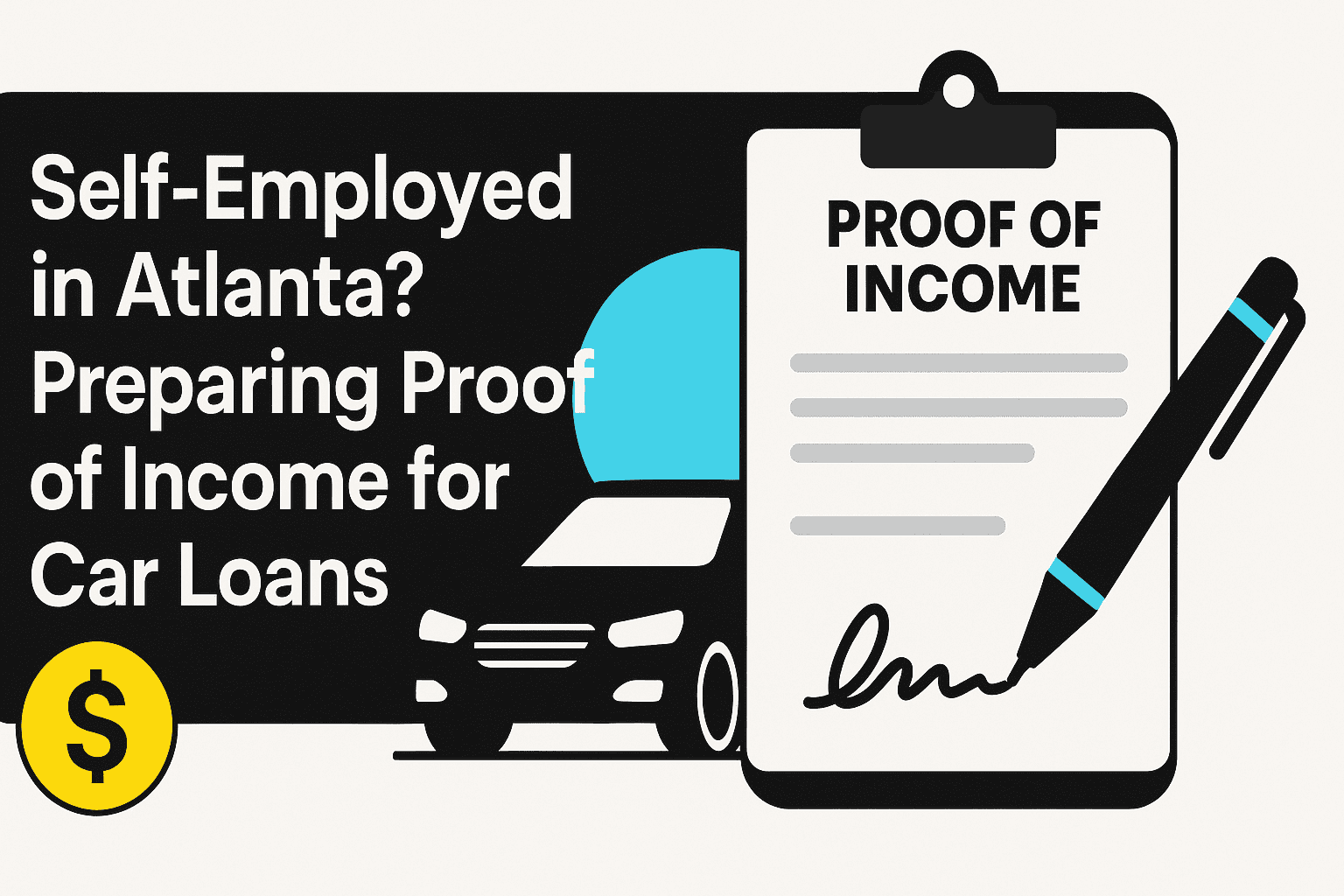
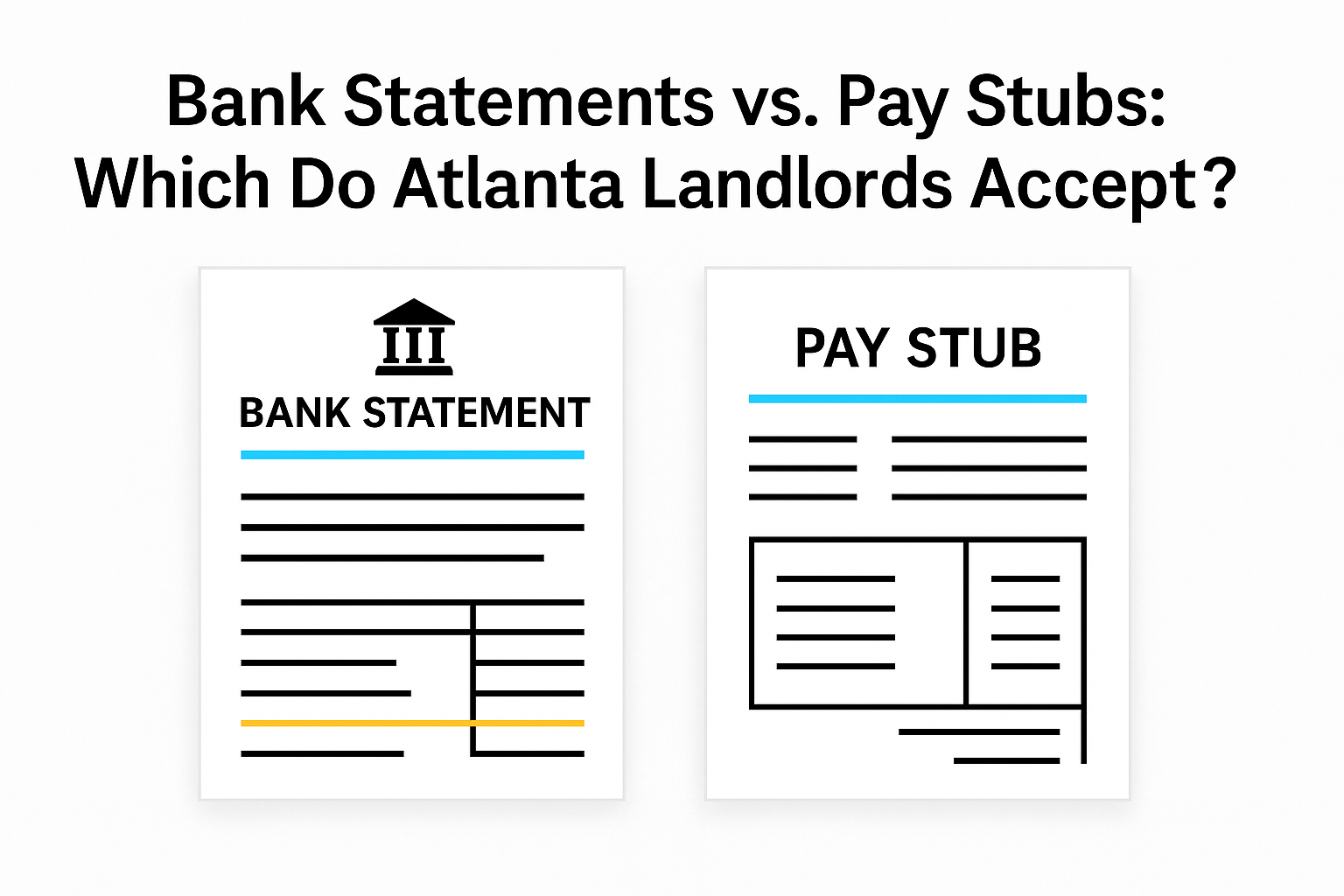
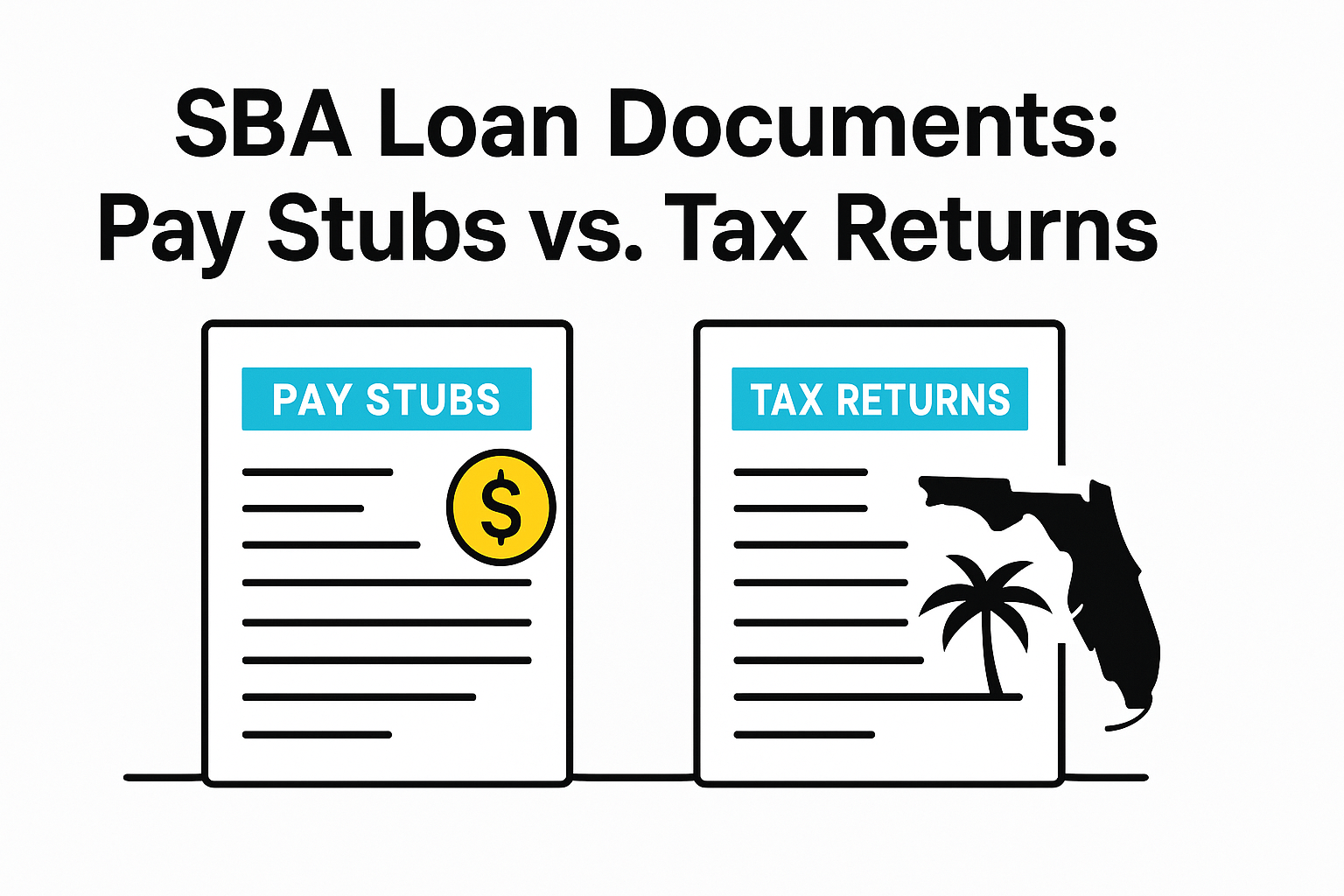
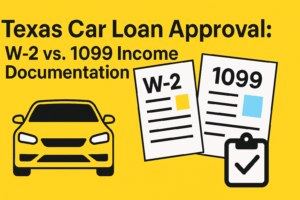
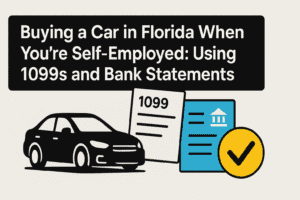

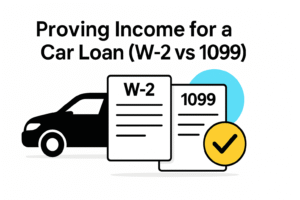

Add comment